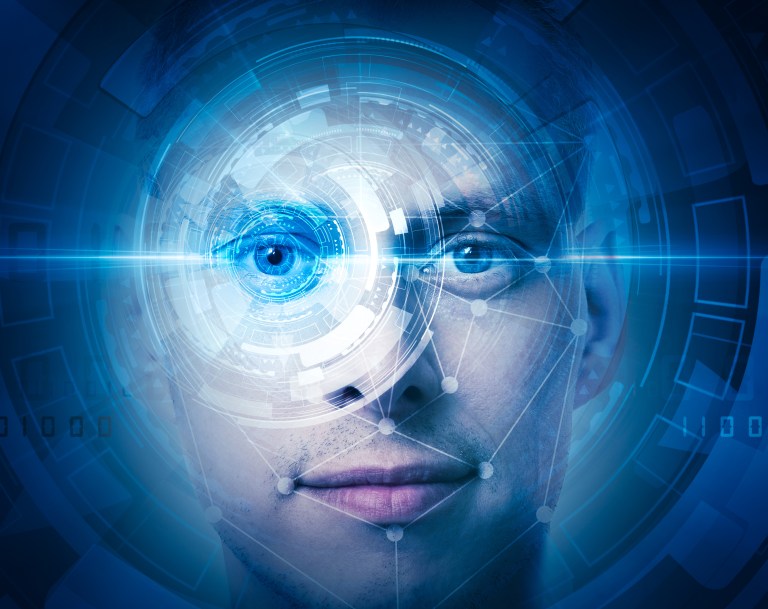It’s one of the ideals of payments and commerce, a vision that drives so much research and experimentation: Making it through a store checkout lane without fishing for a card or waving a mobile phone, or even checking into a hotel after an exhausting flight without producing a driver’s license and credit card to gain access to the room. Transactions anchored around biometrics, and biometrics only, represent a seemingly utopian future that seems to get closer every year.
This is a story of one possible path to that future, as told by George Brostoff, CEO and co-founder of SensibleVision, to Karen Webster during a recent interview that focused on the company’s work on 3D facial recognition for authentication, payments and fraud prevention.
The Florida-based firm recently launched its 3DWALLET technology, which, according to SensibleVision, “is designed to let retailers replace card and cash payments — and eliminate the need for checkout lines — through a 3D facial recognition platform that automatically identifies customers and charges them for their purchases.”
So What’s The Big Deal? Faces Are Already Public…
The idea behind that technology — the thought that could encourage consumer adoption — is that a person’s face is already a public display of identity. Not only do people generally go about their lives with uncovered faces, but they are part of ID documents. “We already have the face in public view,” Brostoff told Webster. “It doesn’t have the criminal association that fingerprints have,” notwithstanding the fact that millions of people use thumbprints to open their phones and unlock the apps on them, including their mobile banking app.
3D facial ID is different, Brostoff said, since it saves consumers from having to move their heads around when signing up for biometric authentication services, or — assuming Brostoff’s vision for checkout via face comes to fruition — when relying on that technology while making purchases in checkout lanes, via POS systems.
Advertisement: Scroll to Continue
Brostoff says that the checkout lane is a “choke point” that becomes an increasing source of tension as more consumers come to expect the relatively instant gratification that comes from online purchases – which, in turn, can make life more difficult for physical retailers unless they can compete on that “one click” convenience.
Early Tests
The technology of 3D facial recognition is certainly not science fiction, but it remains at an early stage of development when it comes to payments and commerce. Brostoff told Webster that his company has tested the technology in Asia, in a program that enables people aged 65 and older to board buses using only their faces. “It eliminates the need for tickets, and it’s all frictionless,” he said.
For the technology to work in physical retail, 3D cameras would need to be integrated into POS terminals. Without going into detail, Brostoff shared that his company is working with POS terminal vendors on such work, and that he can foresee those companies offering the facial recognition technology as upgrades and options, as part of the lifecycle-and-replacement cycle for merchants. Payment data and preferences would be stored for efficiency.
That may be the promise, but there are significant limitations on facial recognition technology. Germany-based FZI Research Center for Information Technology recently demonstrated an in-vehicle camera system that monitors such factors as the driver’s head pose and rate of eye blinks to determine his or her physical state, which would then lead to warnings for tired or sick drivers.
Brostoff expressed skepticism that facial recognition software will do a good job of reading consumers’ emotions, at least anytime soon. After all, he said, if you put 10 people in a room and ask them to judge others’ emotional states based on facial expressions, you might get 10 different answers, underscoring the challenge of creating mathematical formulas that could reliably handle such a task.
Easing Consumer Concerns
But that doesn’t mean facial recognition technology lacks serious appeal — even if consumers might not know it yet. Beyond the fact that faces are already public — lessening the privacy concerns attached to biometrics — consumers would ideally have the option to store their facial templates on devices instead of the cloud, which could ease security worries.
“I think that would put most consumers at ease,” Brostoff said during the PYMNTS interview.
In fact, to gain more trust, the retailer and others who might use 3D facial recognition technology could make assurances that unlike, say, Google, they would refrain from marrying the biometric templates with tracking data about consumers who use it.
The future can take many different forms, but this is certain: Consumers will always have faces, and wise merchants will want to reduce frictions. The coming months and years will offer more guidance about whether and how those two paths will converge – and go mainstream.




